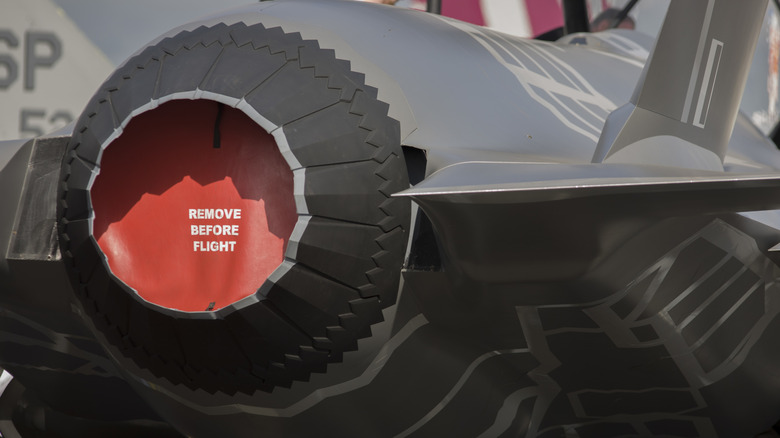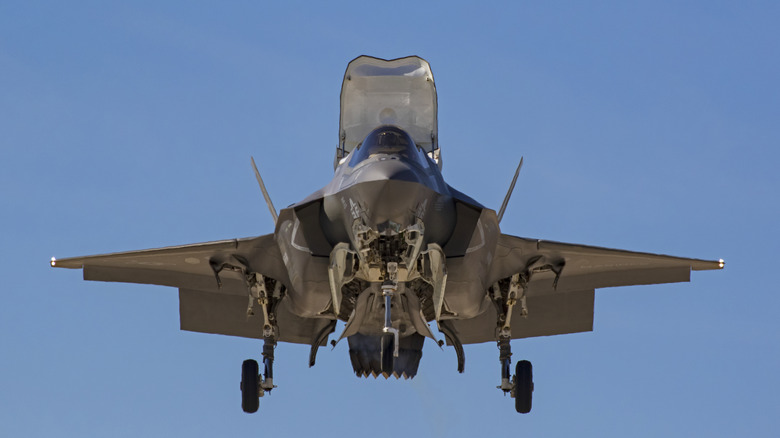How Does The F-35 Fighter Jet's Swivel Nozzle Work?
As one of the few fifth-generation fighter jets, the F-35 Lightning II is widely considered a highly advanced jet because of its stealth, multi-role capability, and sensor functionality. When Lockheed Martin won the contract in 2001, it built and designed three variants. The F-35A, with its conventional takeoff and landing abilities, went to the Air Force. The Navy received the F-35C, a version with increased wing area and a reinforced landing gear suited for carrier operations while the F-35B went to the Marines.
The F-35B is unique because it's the only 5th-generation fighter with short takeoff and vertical landing (STOVL) capabilities . The key to the F-35's STOVL ability is its three-bearing swivel duct nozzle (3BSD). As the name suggests, this nozzle can swivel 95 degrees, directing the engine thrust vertically, and allowing the F-35B to take off and land without a runway. The pilot can control the engine's thrust vector with this feature, enabling the aircraft to hover and transition from takeoff to flight without a short take-off roll, compared to conventional takeoff and landing jets.
The F-35B is also equipped with Rolls-Royce's LiftSystem, which produces 20,000 pounds of thrust downward. Designed as a two-stage counter-rotating system, the 50-inch LiftFan is located behind the F-35's cockpit and hidden by a control surface — or flap. A driveshaft connects it to the main engine and, combined with the swivel nozzle and Roll Posts, provides the forward and vertical lift that allows the F-35B to take off vertically, hover, and land vertically.
A powerful and versatile use of engine power
The F-35B's 3BSD is an evolution of earlier designs used in the X-35 prototype. Before the 3BSD, the plane instead used a two-dimensional Single Expansion Ramp Nozzle (SERN), but it proved ineffective. The 3BSD proved lighter and gave better propulsion performance than the SERN version.
Powered by Pratt & Whitney's F135 engine that delivers more than 40,000 pounds of thrust, the F-35B can reach Mach 1.6. Despite this massive engine power, it would be useless without the control provided by the swivel nozzle. Because it harnesses and focuses the thrust for the engine, the swivel nozzle is the most crucial component of the F135 engine. When the nozzle is oriented for conventional flight, 100% of its thrust is used for forward movement. However, when pointed vertically, nearly 50% of the thrust is used for stabilization.
Because it combined cutting-edge technology, operational flexibility, and the ability to do both short takeoff and vertical landing, the F-35B revolutionized military aircraft design. All these features give a huge advantage to the F-35 over its adversaries, making for a formidable and versatile platform, capable of operating effectively in a wide range of combat environments. All these factors, however, have pushed the F-35 beyond its initial price, making it one of the most expensive fighter jets in history. Costs continue to rise due to necessary upgrades to maintain its position as one of the best fighter jets in the world.

